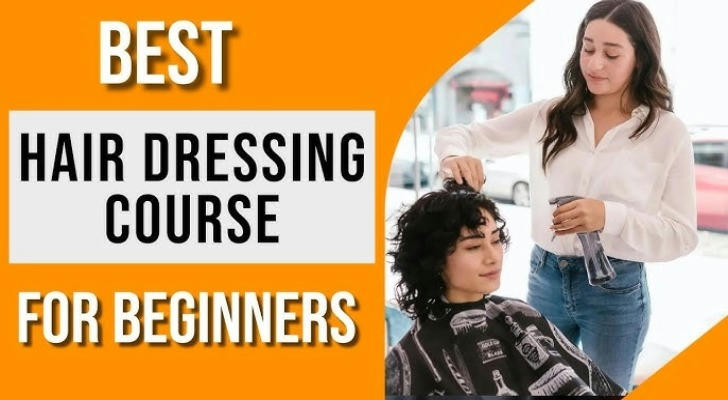How to start your dream hairdressing career through a government-supported or accredited hairdressing and beauty course?
Are you passionate about a career in hair and beauty, but hesitant due to high tuition fees and lack of experience? Now, by studying hairdressing and beauty courses at a hairdressing school with policy and employment center support, anyone can easily learn professional skills and start their dream hairdressing and beauty career!
Ⅰ. What can you learn from a government-supported hair and beauty course?

Hairdressing Basics: Understand hair structure, product properties, and hygiene management.
Hair Design and Styling: Master various fashionable hair design and styling techniques.
Hair Coloring and Perming Techniques: Learn professional hair coloring and perming procedures.
Salon Management: Learn how to operate and manage a hair salon.
Customer Service Skills: Improve communication skills and provide quality service.
Course Highlights
Duration: The course duration is about 3 weeks
Learning Mode: Full-time, part-time, and a hybrid online/offline program, suitable for those with work or family responsibilities.
Certificate: Upon completion of the course, you will receive a nationally recognized hairdresser certificate, and some programs are NACCAS-accredited.
Employment Support: Many programs partner with hair salons to provide direct employment opportunities.
Ⅱ. Where can beginners enroll in hairdressing courses?
Currently, it's easier for beginners to choose programs with policy support and financial assistance. Here's some information on relevant courses:
1. American Job Centers
Led by the U.S. Department of Labor, job centers partner with local vocational training institutions to provide skills training, including hairdressing courses. Most programs are short-term and provide tuition, accommodation, meals, and certificate training, along with job placement support, making them suitable for young women with no experience entering the hairdressing industry.
2. Aveda Academy
Offering a comprehensive range of courses in hairdressing, nail art, and hair coloring, with campuses in multiple states (such as New York, Atlanta, and Birmingham), they also offer federal grants and scholarships.
3. Empire Beauty School
This program, offered in several cities across the United States, covers basic hairdressing, styling, and beauty management. The Lehigh Valley campus also allows students to complete the entire program on weekends or evenings. This program offers scholarships and is accredited by the National Accreditation Commission for Professional Arts and Sciences (NACCAS).
4. Recommended Online Platforms
Cursa/Alison: Suitable for self-learners, with no nationality restrictions. Students can take online hair and beauty skills training courses and earn relevant certificates through the website.
Ⅲ. What are the advantages of choosing the aforementioned hairdressing and beauty programs for beginners?
Reduced financial stress: Tuition fees are reduced through scholarships and government support.
Multiple Campuses: By choosing a campus closest to you, you can save on commuting time and expenses, reducing personal financial pressure.
Flexible study time: Some schools offer evening and weekend study opportunities, which can help those who change careers to have a good balance between work and study.
Abundant Employment Resources: The program partners with employers to help you find employment.
Official Certification: Obtain a nationally recognized hairdresser qualification upon graduation.
Low Entrepreneurship Barrier: Low startup costs, suitable for first-time entrepreneurs.
Ⅳ. Career Opportunities After Completion

Professional Hairdresser: Gain experience by styling clients' hair in a salon.
Self-Employment: Open a personal hair studio and provide personalized services.
Mobile Hairdresser: Flexible and convenient door-to-door service.
Wedding and Event Stylist: Create customized hairstyles for various events.
V. Jack's hairdressing journey:
Jack, 25 years old, dropped out of school due to family reasons. He later enrolled at Aveda Academy, majoring in hair and cosmetology, receiving federal financial aid. Through systematic training, he mastered both hair design and practical skills. After graduation, he landed a job at a renowned local salon and eventually opened his own studio, becoming a sought-after professional hairdresser in the community.
Ⅵ.Are hairdressing courses suitable for people of all ages?
Yes! The answer is yes, hairdressing courses are suitable for people of all ages:
Young Adults (18-30): They can quickly enter the job market, learn creative skills, and adapt quickly to industry trends.
Middle Adults (30-50): They offer career transition opportunities and flexible courses suitable for students with some work experience.
Seniors (50 and over): They offer opportunities for post-retirement employment or as a hobby, allowing them to leverage their life experiences and interact with clients.
The hairdressing industry is inclusive and suitable for all ages, offering flexible learning and career development opportunities.
Ⅶ. How can beginners apply for government-supported hairdressing and beauty courses?

- Choose a suitable introductory hairdressing program.
- Prepare application materials, such as proof of identity and income.
- Submit your application according to the school or training institution's instructions.
- Receive a confirmation notification to learn about the course schedule.
- Attend training on time, complete the course, and receive your certificate.
Whether you're a complete beginner or seeking a new career opportunity, government-supported hairdressing courses offer a solid starting point for success.
Seize this opportunity and start your hairdressing dream!
Note: This information only provides course information, not specific services.
